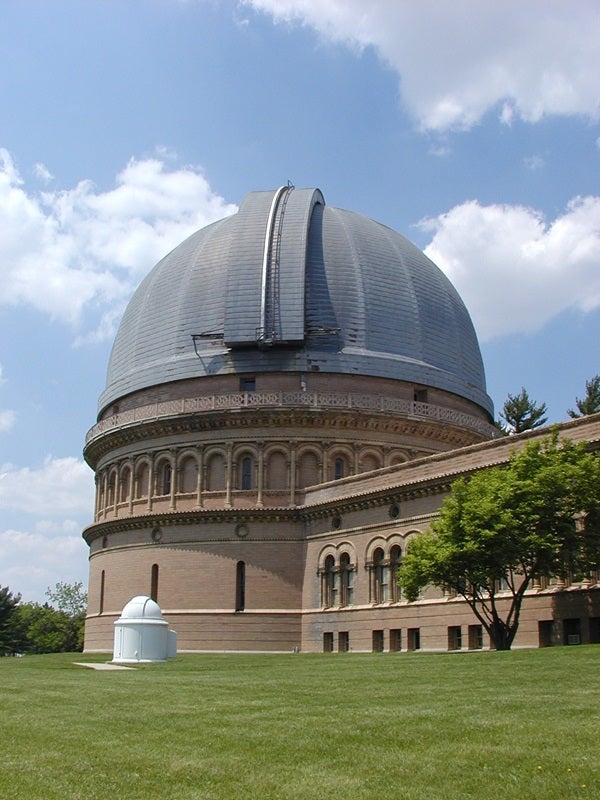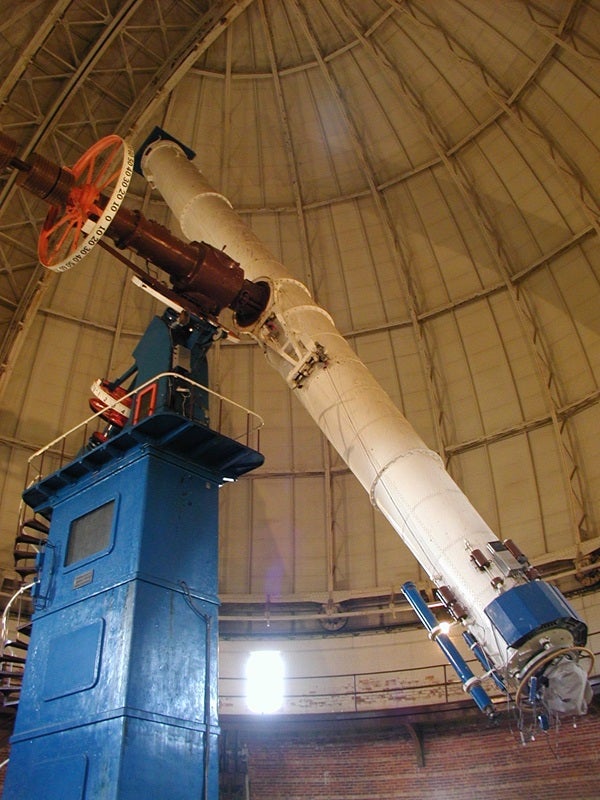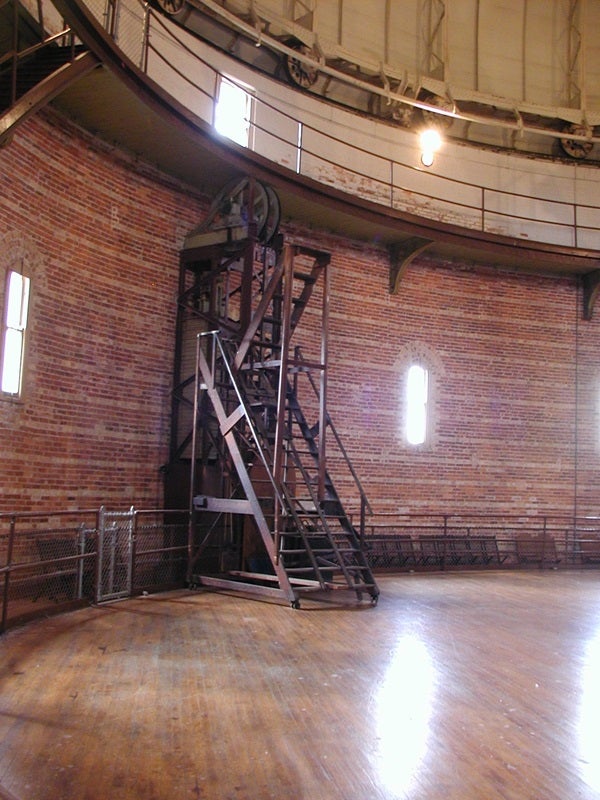In many ways, this closure isn’t surprising. Yerkes is very much a relic of a past era, not the type of observatory that is used for major discoveries in the modern day. The University of Chicago, which owns and operates the facility, has decided the observatory is not worth the expense of maintaining it. However, we can hope someone will take over the operations and keep the building open to the public, because it’s truly one of the great pieces of scientific history and architecture.Yerkes Observatory is an impressive late-19th-century structure, housing what is still the largest refracting (lens-based) telescope in the world. The primary lens in the main Yerkes telescope is 40 inches (102 centimeters) in diameter. The observatory was named for the impressively mustachioed railroad tycoon Charles Yerkes, who bankrolled it in Gilded Age style. (The name is pronounced “YER-keys,” and the less said about how Yerkes ran his businesses, the better. “Yerkes was jerky” is a good mnemonic.)
The observatory stands on the shore of Geneva Lake in Williams Bay, Wisconsin, just across the border from Illinois. The land it sits on is park-like, and the building itself is a marvel of astronomical architecture and engineering from the dawn of the modern era of big science.
Big in every way
The impressive lens size, which is the glory of the telescope, is also why Yerkes is a sort of scientific dead end. Simply put, there’s a practical limit to how large you can make a lens, and Yerkes’ 40-inch telescope butts against that limit. Lenses are made from a single piece of material, which must be free of defects. (Mirrors only have to be defect-free on the surface, so they can be made much bigger, or even built up out of multiple segments.) Even if it’s perfect after manufacture, changing gravitational stresses as the telescope moves can alter the shape of the lens subtly, leading to distorted images. In addition, the edges of lenses are tapered, which makes them act like prisms, splitting the colors of light from whatever object is being observed.
Finally, the larger the lens, the longer the telescope tube must be to focus the resulting image. The Yerkes refractor is 63 feet (19 meters) long, which demands a correspondingly huge building to house it. While it makes for an architectural marvel, the 90-foot-diameter observatory dome at Yerkes was also an engineering challenge. The entire dome must rotate to allow the telescope to point at various objects, and because the tube is so long, a large section of the floor itself moves up and down to allow it to point at higher angles on the sky. (By comparison, Yerkes Observatory also has a 40-inch reflecting telescope, which is a better instrument and its dome is less than half the diameter of the 40-inch refractor’s.) In 1897, electricity was still relatively novel, so Yerkes Observatory was constructed with its own electrical plant to supply direct-current (DC) power to the motors.
The building is ornate inside and out, in many parts more like a museum than a working science facility. Terra-cotta animals, astrological motifs (ironically enough), and fanciful creatures cover the pillars outside, while the interior is graced with marble floors and high ornate ceilings. The dome for the 40-inch telescope is cathedral in scale, with a great deal of lovely cast-iron and wooden fittings. The machinery — pulleys and cables, huge gears and motors — are veritable works of art in their own right.
A legacy of science
Yerkes Observatory is definitely an impressive edifice, but advances in telescope technology have left it behind. While the telescope was a triumph of engineering and a harbinger of big science in the 20th century, nobody is likely to ever build another refracting telescope as large again.
Yet Yerkes had its day. Edwin Hubble did his doctoral research there, before his more famous work measuring distances to other galaxies, which led to his discovery of the expansion of the universe. Edward Barnard, who helped map the Milky Way and measured the motion of nearby stars, even took what may be the earliest known photograph of Pluto in 1909 using the Yerkes Bruce photographic telescope, though he failed to identify it as a new world.
As much larger mirror-based telescopes began dominating astronomy, Yerkes Observatory continued to house astronomers, but they mostly performed their observations at other facilities. Although its huge library of archival photographs of the night sky has been used to track star motion within the Milky Way over the past century, Yerkes’ instruments themselves have not been used in active research for some time. As much larger mirror-based telescopes began dominating astronomy, Yerkes Observatory continued to house astronomers, but they mostly performed their observations at other facilities.
In other words, it’s not surprising that University of Chicago has thought about giving up Yerkes — other observatories are where the action is, and have been for many decades. (The university threatened to close and sell the observatory in 2005, though it suspended the plans after public outcry.) Additionally, keeping the increasingly ancient machinery working isn’t cheap. But as a public outreach facility and a museum of astronomy, Yerkes is still a literal landmark. As reported in the Chicago Tribune, Williams Bay Village President Bill Duncan hopes the building can be preserved and kept open in some capacity.
For now, Yerkes Observatory will operate as usual through the end of September. And regardless of its uncertain future, its clear legacy will survive in the annals of the history of astronomy.












